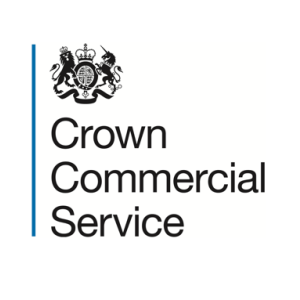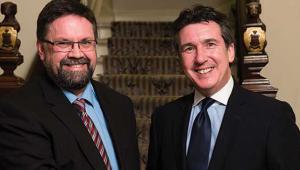
Clemmie Smith is deputy director for health and education workforce at Crown Commercial Service, with responsibility for workforce requirements relating to recruitment, flexible and temporary staffing in healthcare and education settings.
She and her team help to manage £2bn of workforce spend each year for the NHS, schools and other public sector organisations.
1. Please tell us about Crown Commercial Service and your role within the organisation.
I joined CCS six years ago to work in the health workforce category and two years ago I took on the deputy director role. The team is a large one, with a wealth of diverse knowledge and experience. It has been a critical period for workforce in both the NHS and in schools.
My team is working closely with organisations across these sectors. We support their recruitment and flexible and temporary staffing needs so that they can deliver for patients, pupils and the public.
Working with partners in both health (as part of the NHS Workforce Alliance) and education, we helped deliver £220m of commercial benefits for our customers last year, across seven core frameworks.
2. What is CCS doing to make it easier for customers to use agreements? How have you listened to customers?
We are always looking at ways we can make our agreements easier for customers to use. We have lots of networks and channels, through which we gather feedback from NHS Trusts, other health organisations and schools.
In health, we have been working with our partners in the NHS Workforce Alliance to streamline framework documentation across our agreements.
This is in direct response to feedback received from customers. We have also been working on a new approach that will allow us to automate some of our sign-up and call-off processes via a digital portal.
In education, the team has worked hard to make things as easy as possible for schools to access workers through our Supply Teachers and Temporary Staffing agreement. We’ve developed a digital tool that allows schools to search local agencies and rates and we have simplified the call-off documentation.
3. What are you and your team working on at the moment?
My team and I are working on a whole host of activities. From delivering our procurement pipeline to engaging with customers and policy makers on how commercial can enable delivery of key health and education priorities.
The NHS Workforce Alliance is currently bringing its second generation of health workforce agreements to market, covering a workforce portfolio that will support the full ‘hire-to-retire’ cycle.
This includes key agreements for international recruitment, flexible or bank staffing and agency staffing, alongside existing solutions for employee support services like occupational health and learning and development.
4. What is your focus for the future?
We know that the next year and beyond will be a difficult period for both health and education organisations in managing their budgets, when workforce challenges are growing. My team, alongside our partners, is focused on how we can work with those organisations to alleviate some of these challenges.
We have solutions and commercial expertise that can support key government priorities such as recruiting new clinical workers into the NHS and clearing the NHS elective backlog. 4,000 new clinical staff were recruited across 80 trusts last year via our Workforce Alliance International Recruitment agreement. We expect that number to be even higher this year.
We have also introduced a new Clinical Insourcing agreement, which enables NHS trusts to use partners to deliver services on their sites out-of-hours to increase capacity and help clear waiting lists.
6. How are you and your team helping customers to make responsible decisions about sustainability and social value?
My team and I have sustainability and social value as core priorities in all the work we do. Social value is built into all of our new agreements, with a key focus on the fighting climate change theme that has been prioritised by the NHS.
This means that suppliers are being measured on their social value contributions as part of the tender process, but also that we have built social value into ongoing supplier relationship management activity. We then work with customers to help them shape their own social value goals by providing examples and case studies from across CCS.











